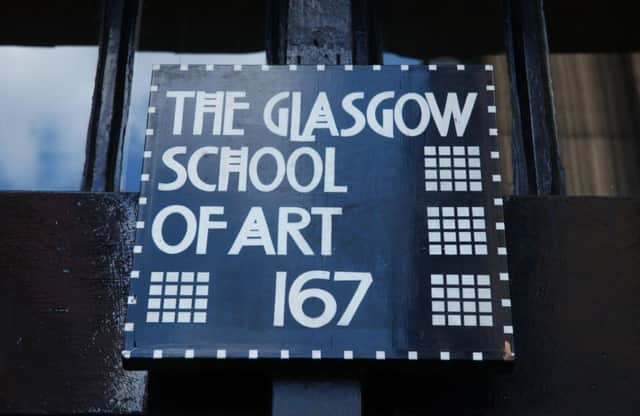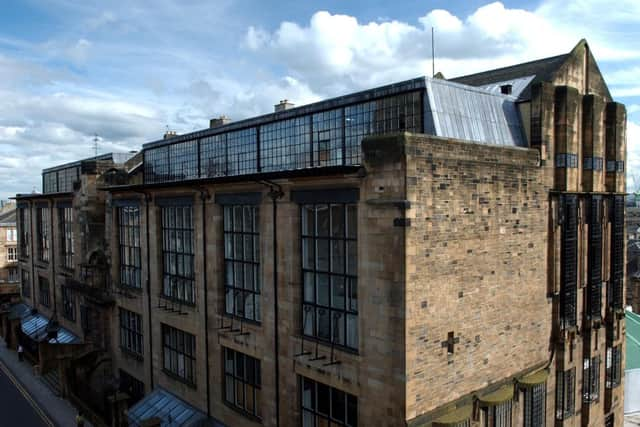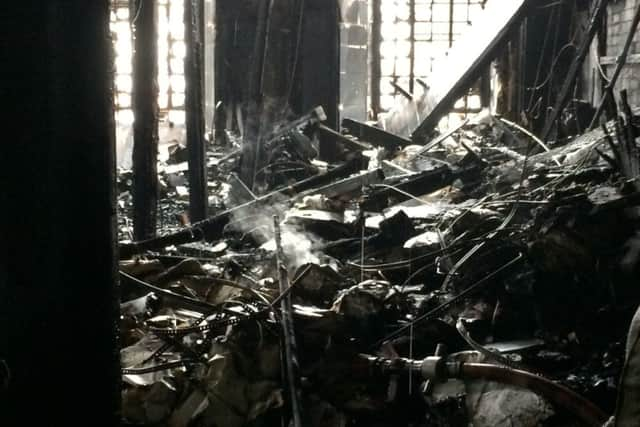Page\Park Architects win Glasgow School of Art bid


Page\Park Architects was selected from a five-strong shortlist for the multi-million project, work on which is expected to get underway within the next year.
It is expected to include a reconstruction of the Charles Rennie Mackintosh-designed landmark’s famous library, which was destroyed in the blaze last May. More than 75 firms from around the world had expressed an interest in the restoration project, which could cost up to £35 million.
Advertisement
Hide AdArt school chiefs said the plans for the restoration of the building would explore “how to best meet the needs of the GSA in the 21st century whilst remaining true to Mackintosh’s astonishing vision.”


Professor Tom Inns, director of GSA, told The Scotsman he believed an “authentic restoration” of the library could be achieved, without creating a “Mockintosh” effect, as some critics fear. It could become home to the GSA’s archives and collections.
Speaking in what remains of the library, Page\Park founder David Page said he believed his practice could restore the library according to the original vision of the architect and his “ingenious” designs, which survived the blaze.
The Glasgow-based architectural practice, formed in 1981, has worked on some of Scotland’s most high-profile conservation and restoration projects in recent years, including Rosslyn Chapel, in Midlothian, Kelvingrove Bandstand, in Glasgow’s west end and the Scottish National Portrait Gallery in Edinburgh, along with the creation of a major new extension to the Glasgow’s Theatre Royal.
Firefighters received huge praise after managing to salvage 90 per cent of the Mackintosh Building and rescuing around 70 per cent of its contents, including the “vast majority” of the art school’s archives.


A reopening of the building is not expected until the 2017-18 academic year at the earliest. The art school has set a target of raising £20 million, with the Scottish and UK governments pledging £5m each.
Advertisement
Hide AdProfessor Inns said the team assembled by Page\Park had impressed the selection panel “not only with their deep knowledge of the building, but of the wider work of Charles Rennie Mackintosh”.
He added: “There will be an authentic restoration of the building, but it will also be about integrating and combining that with 21st century thinking.
Advertisement
Hide Ad“There is a great deal of understanding about the building, it is incredibly well-documented and we’ve had a forensic team working in the library. There is a rich portfolio of knowledge and information. If we can harness all of that and the creative energy of the architectural team we can put together something genuinely authentic.”
Mr Page said a careful examination of how Mackintosh had designed and constructed the Mackintosh Building’s library had been carried out.
He added: “Our conclusion is that we think we know enough to do a successful reconstruction of the library. It was an incredibly emotional situation with the fire. We were all hurt by it. Everyone had the same sense of sheer shock. We need to stand back from all that and determine the facts in terms of how a reconstruction might take place.”
Neil Baxter, secretary of the Royal Incorporation of Architects in Scotland, said: “Page\Park were the strong favourites for this crucially important role. However the procurement process was careful and rigorous. There is no question this commission has been won on merit.”
The blaze that tore through a Glasgow icon
STUDENTS were putting the finishing touches to end-of-year projects in the Mackintosh Building when the fire caught hold at lunchtime on 23 May.
The blaze started in a basement area and spread swiftly through its west wing.
Advertisement
Hide AdThe official investigation found that the blaze was triggered by flammable gases from a canister of expanding foam. They were set alight when they came into contact with the hot surface of a film projector in a studio being used by a student, who has not been identified.
The Scottish Fire and Rescue Service report revealed that the rapid spread of the fire through the building, which dates back to 1909, was aided by the presence of original ventilation ducts and a large number of timber-lined walls.
Advertisement
Hide AdThe report said: “A vertical service void ran the entire height of the building to roof level and acted like a chimney. It allowed flames, hot gases and smoke to travel vertically.”
The probe also found a new fire-prevention system was in the latter stages of completion and not operational.
Forensic archaeologists began a painstaking sift through the iconic building, including the remains of its historic library, in November. The 12-week operation to document and remove the remains uncovered parts of a studio clock and its mechanism, a silver salver, most of the metal from the lamps in the library’s central light fitting and a number of rare books.
But 90 oil paintings, including two by Mackintosh, and around 8,000 books and journals had been lost. Some 80 per cent of the GSA’s rare book collection survived.
FOLLOW US
SCOTSMAN TABLET AND MOBILE APPS